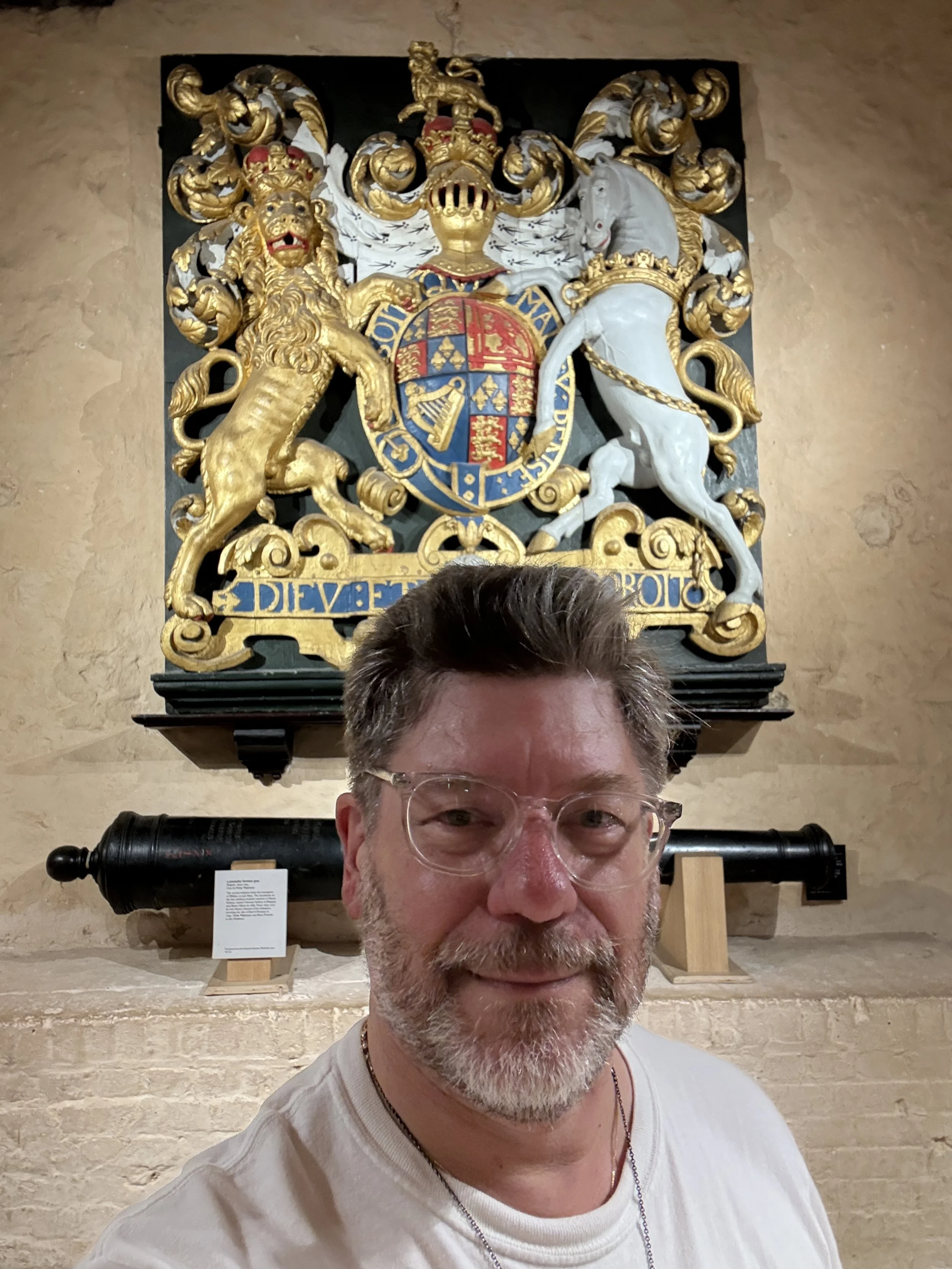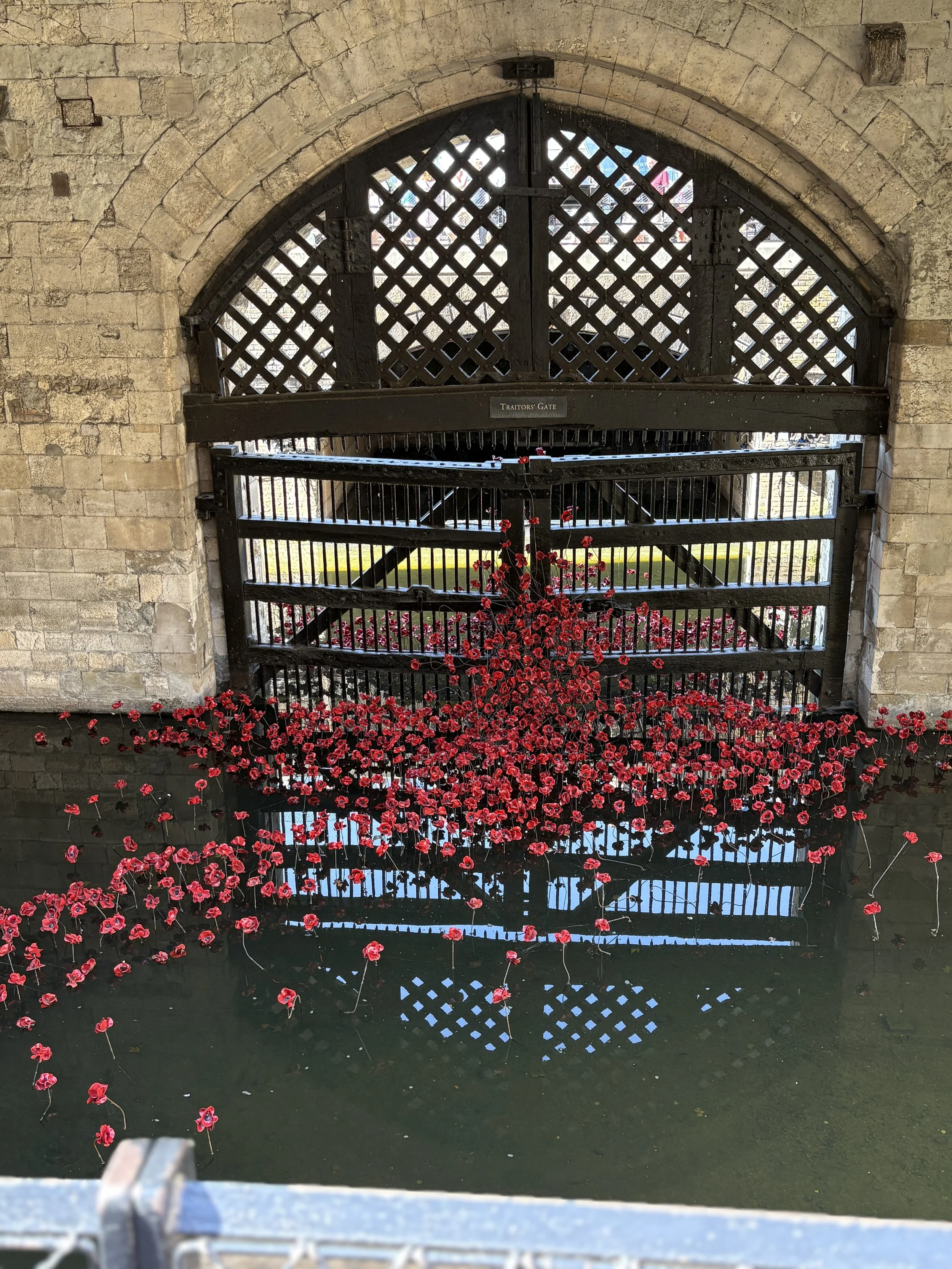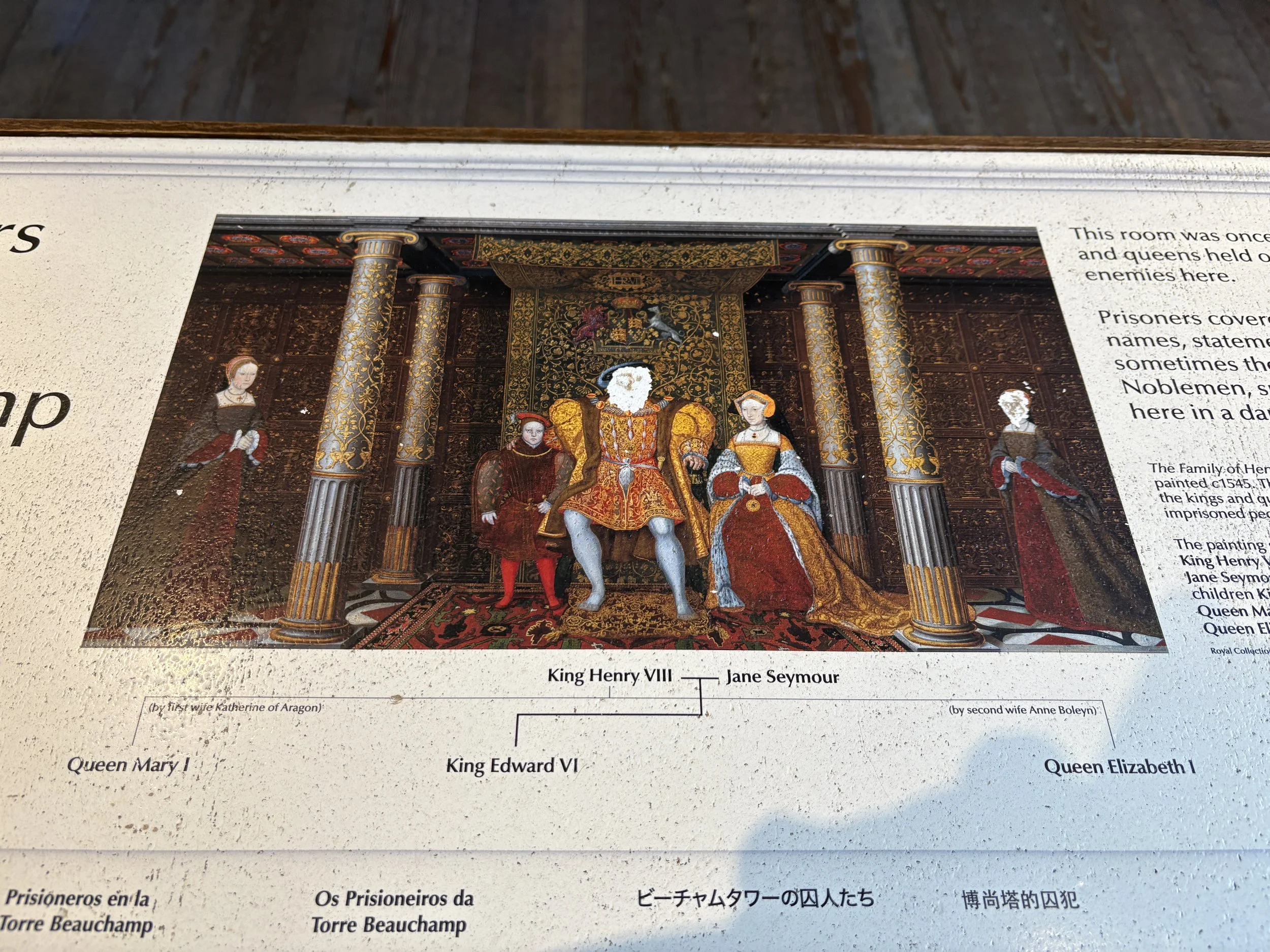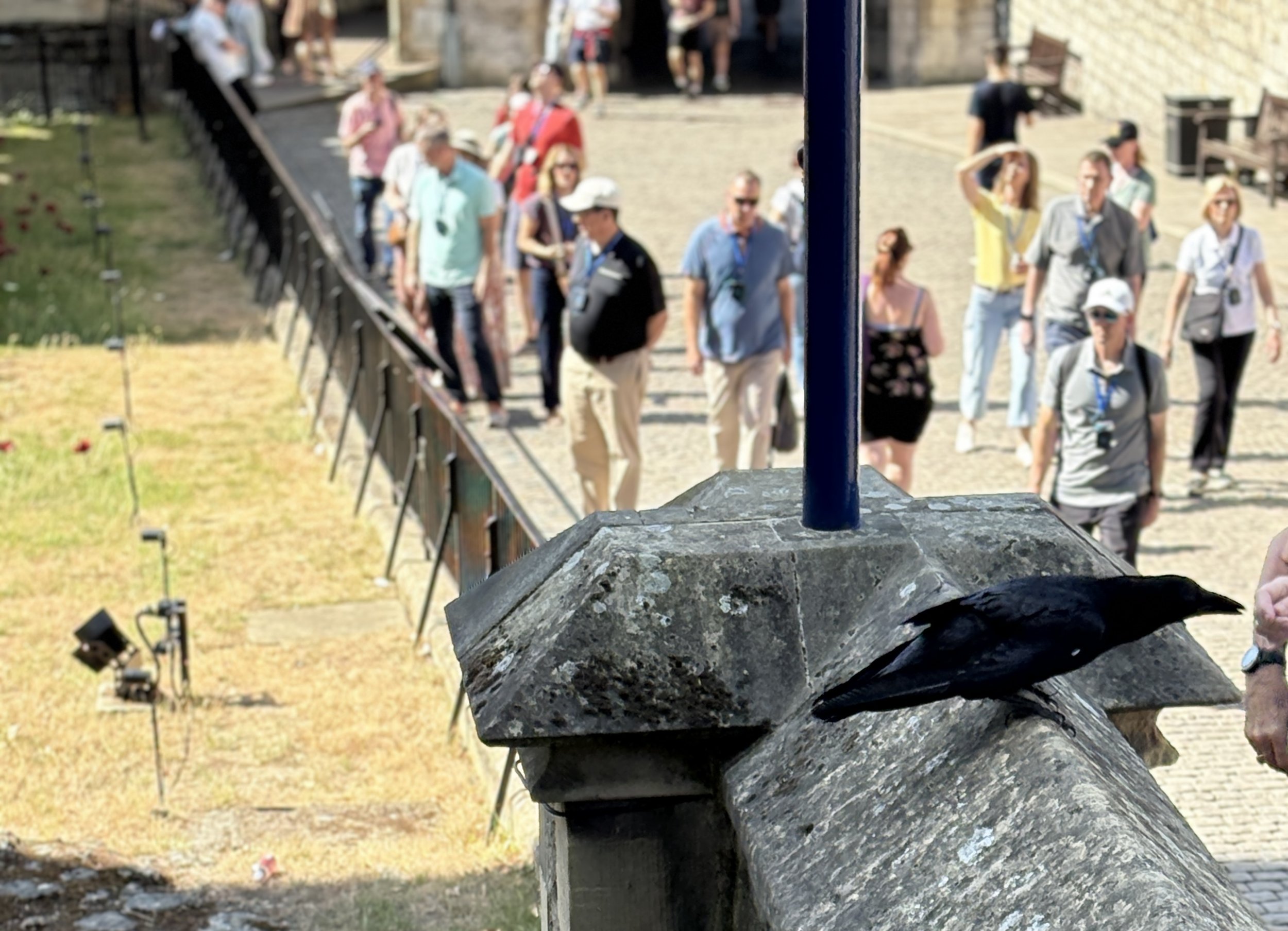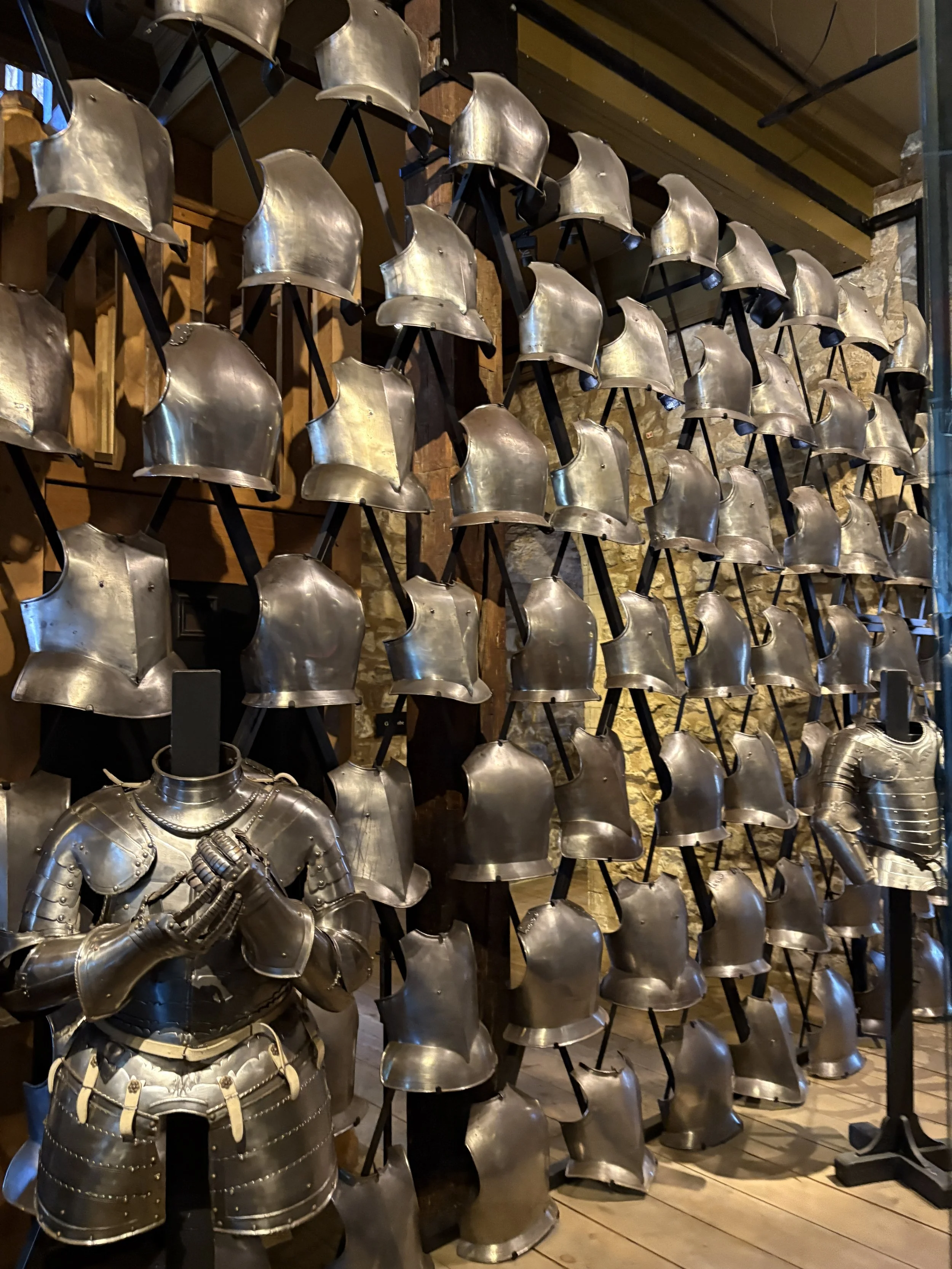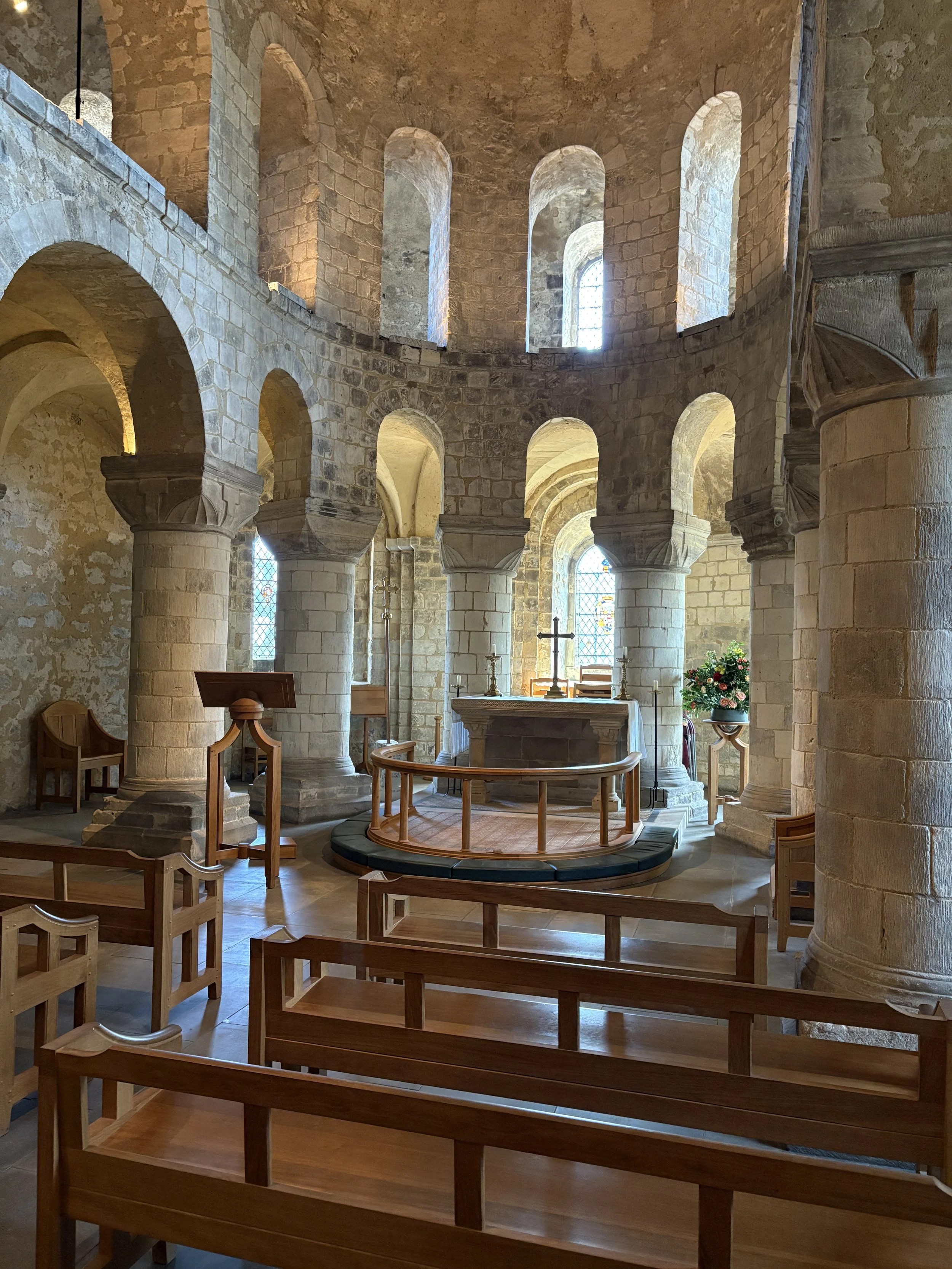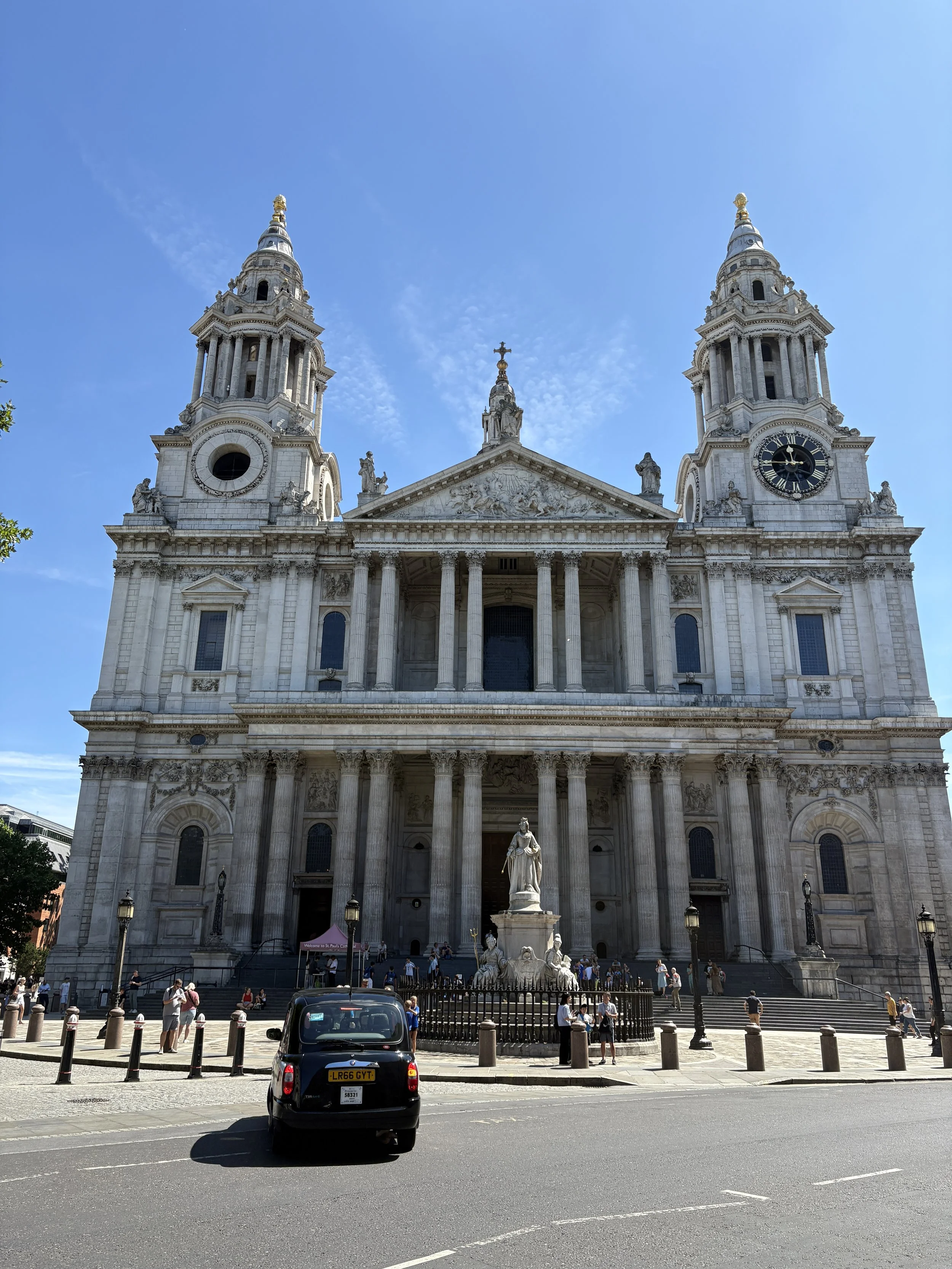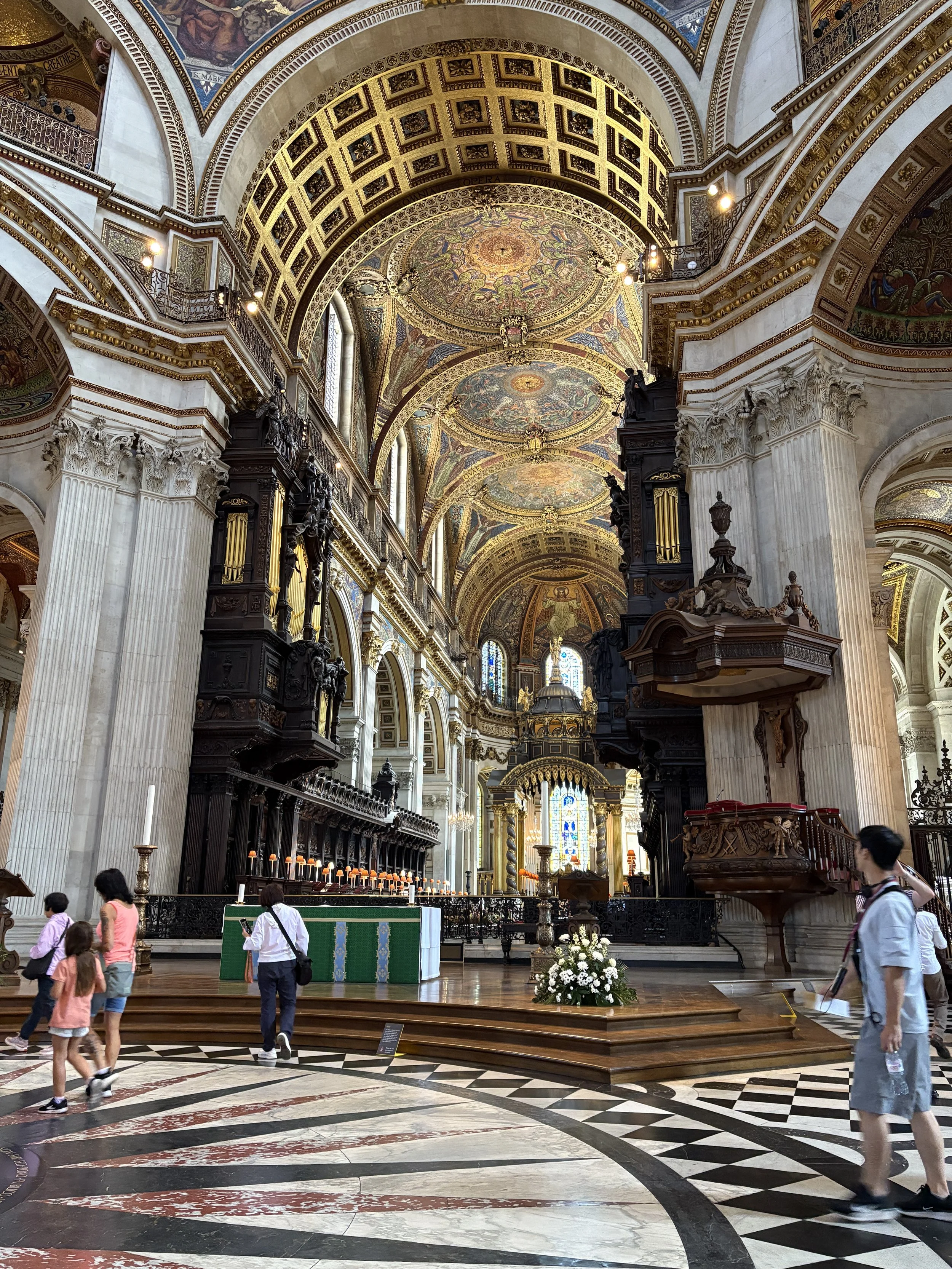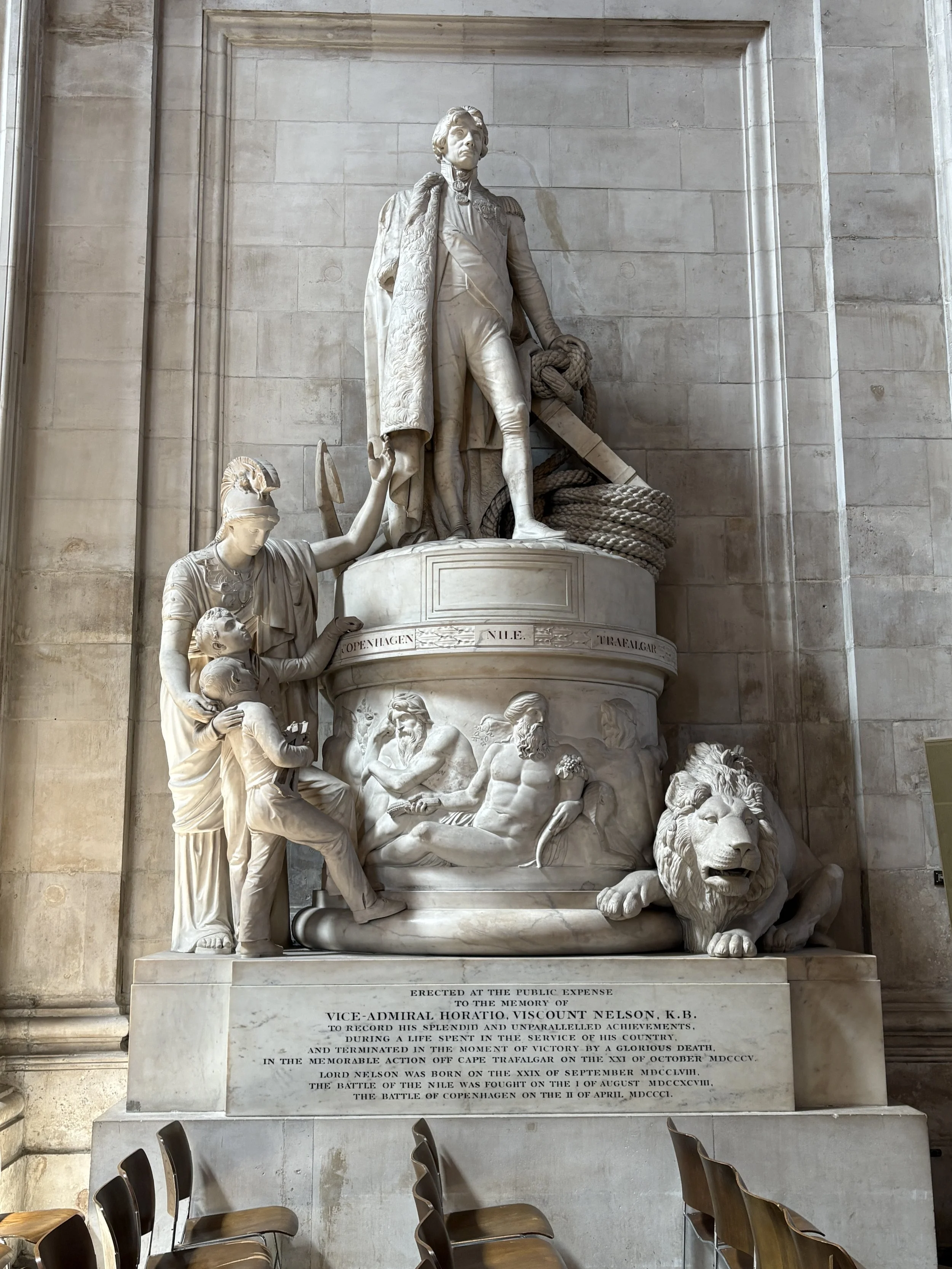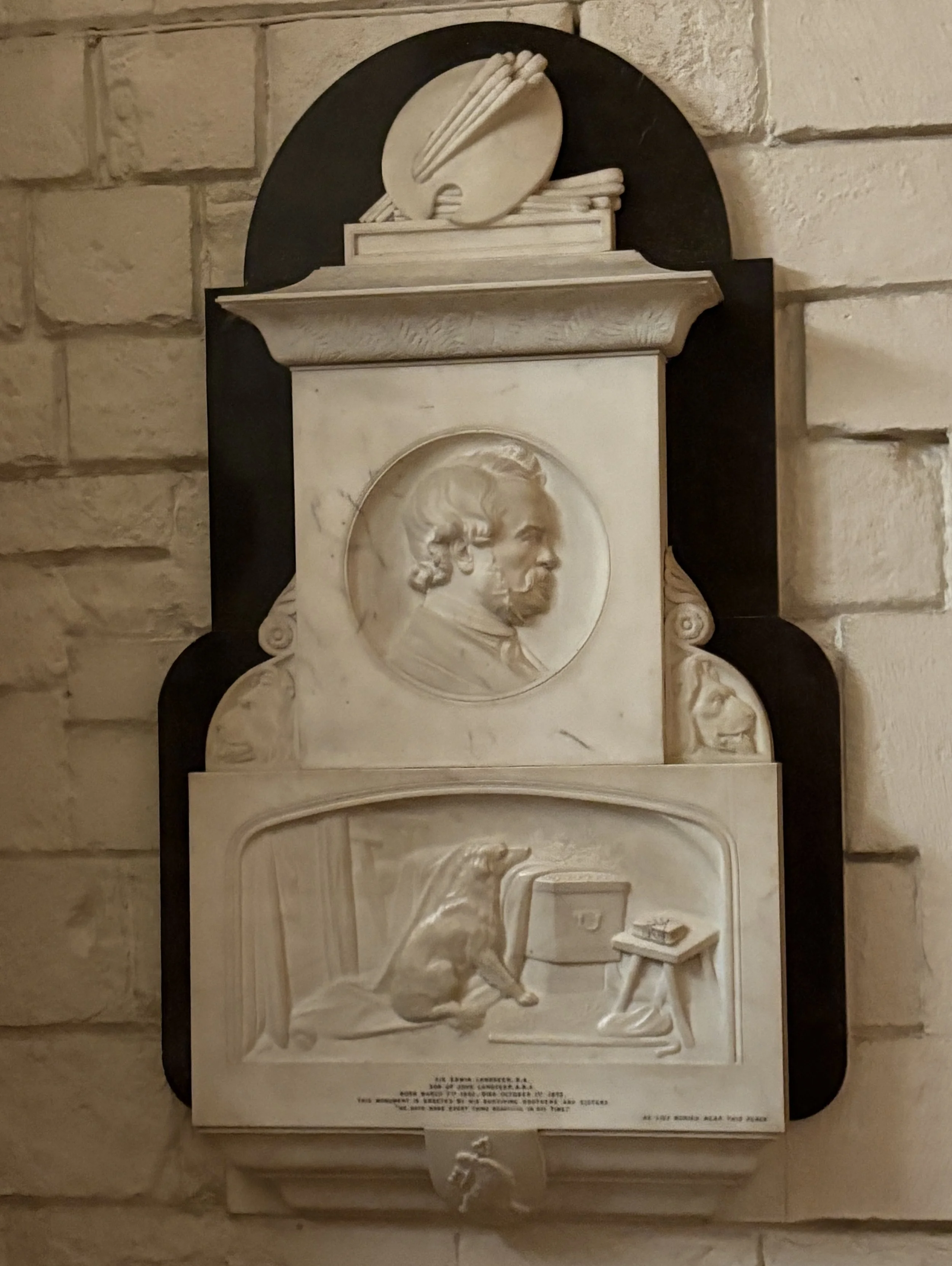Recollected after the fact.
1) No ranting shirtless men on the Underground this morning, but I was back in rush hour for my principal event of the day: the Tower of London. I had been once before, back on that Christmas trip in 1988, and of course I wanted to see the Crown Jewels again.
2) Approaching the Middle Drawbridge (their Before You Go email said that whatever the usual entrance was was closed for renovation or something), the line looked long and stationary. I asked the young family ahead of me “Is this the line for 9:30?” “Everybody’s in one line.” And so it was. And so I got in 15 minutes earlier than my ticket time.
3) The Tower is the site of nearly 30,000 ceramic poppies to commemorate the 80th anniversary of the end of World War II, The Tower Remembers, including the Traitors Gate. Later in the morning I heard one woman say “I wanna go look at those flowers. I don’t think they’re real.”
4) My main interest, no surprise, was the Crown Jewels, and I got there early enough that I could walk right into the first gallery. When I left the Tower two hours later the line just to get into the building stretched almost halfway around the entire courtyard.
4a) Now you know me: when I’m told I’m going to see the Crown Jewels, I expect to see the Crown Jewels. But they make you work for it here, with galleries of other regalia, replicas (!), and other ceremonial gear like a flock of trumpets and kettledrums and such like. The very first included the three frames for the crowns used at the coronations of George I, George IV, and Victoria. Those jewels were all repurposed or, in G4’s case, had been rented and had to be returned.
4b) From my first visit I had a vague memory of standing on a conveyor belt and circling a display of the Jewels. And when I finally reached that gallery, how wonderful — there were indeed moving walkways! But not quite as I remembered. Now there are two, with a display down the center. I chose the walkway on the left, and so got a view of the back of the crowns. More on that later.
4b.i) No photos were permitted in the entire thing (no surprise there), but there was the sceptre with that big ol’ Cullinan diamond set in it, Mary of Modena’s pearl-bordered crown from the 17th century, three coronets (?) used at investitures for Princes of Wales (the Space Age style used in the 1960s hasn’t aged well in my view), and crowns most recently used. That would include Queen Camilla’s Crown, modified in 2023 but last used by the redoubtable Queen Mary. #renewreuserecycle
4b.ii) So . . . I made it to the end of my moving walkway, and hadn’t seen the Koh-i-noor or really gotten a good view of the sceptre at the beginning. My opportunity presented itself in an elevated walkway on the other side of the moving walkway on the right. It wasn’t too crowded, so I made my way back to see what I wanted to see.
4b.iii) And I am so glad I did, because it’s true: the Koh-i-noor really does have its own special light. It remains set in the front of the crown of Queen Elizabeth the Queen Mother, and it radiates both within and without in a way photographs can’t capture. Its troubled history means that it’s highly unlikely it will ever be worn again; I feel fortunate to have been able to see it.
4c) And there by itself at the end was the Imperial State Crown with its legendary stones: the Black Prince’s Ruby, the Cullinan II, and the Stuart Sapphire (probably my favorite because at the end of his life G4 actually gave it to his mistress, Lady Conygham (sp?), but she realized the enormity of this impropriety later and returned it to the Crown).
5) Then it was off to the Beauchamp Tower to learn about imprisonment, torture, and executions. The big surprise here had nothing to do with the Tower. I followed a young priest in a soutane up the wide corkscrew staircase. He was talking to a woman I think he was accompanying, saying “Well I lived in New Orleans when I was in the seminary . . . ” “Forgive me for interrupting, but I’m from Lake Charles.” And the wideness of his smile! “Then I guess I should say I’m really from Alexandria!” The Home State is everywhere. We talked very briefly about what brought us to England and parted with a friendly handshake — which made me reflect on how little I shake hands these days.
5a) The chamber we entered had held prisoners back in the day, several of whom left graffiti carved into the walls as testimony of their presence there. In the center of the room was a modern information board including a family portrait of the Tudors, with Henry VIII and all three of his legitimate children, and Jane Seymour. I noticed that the faces of H8 and E1 had been picked away — possibly by a Marian partisan?
6) Returning to the courtyard, I saw my first raven of the Tower. “With many a flirt and flutter” it had established itself on a balustrade, uncomfortably close (in my view) to where anyone going up would want to put their hands. And here came a woman, large and walking with a tall cane, slowly beginning her ascent. Of course she stopped and held out her fist to the raven. Had she not seen the signs “Caution! Ravens may bite”? Had she not read Edgar Allen Poe?! Happily nothing happened, but I was prepared to witness something from one of those Damien movies . . .
6a) After she passed by an entire tour group stopped by the raven to hear their guide’s spiel about it.
7) The White Tower is the principal building of the Tower complex. Tt houses the Armoury, and they make it clear at the beginning that there are 200 steps up corkscrew staircases (but could have been clearer that there are also more steps up more traditional staircases). So when I saw another woman walking with a heavy tread, a staff, and one calf in a splint, I adroitly managed to get ahead of her party by moving into a different lane.
7a) Armor is not quite my thing, but they do have a very impressive collection, including a complete suit of armor made for Henry VIII. I rather hoped they might have something on view that had once been worn by a King’s Champion, but I couldn’t identify anything. Also on view, a collection of beautiful wooden horses and lifelike wooden heads from the centuries-old Line of Kings exhibit. Comments of long ago visitors were on display, and this stuck out from a 19th-century Polish tourist: “However there is little art in them and they look like horrible monsters, blank and in poor taste, not work looking at unless by children or the rabble.” Ouch!
7b) St. John’s Chapel was really my favorite part of the White Tower.
8) Finally, it was time to press on. If you go: Go early. I mean go before 10:00 AM. Go directly to the Crown Jewels; do not pass Go, do not collect $200. Choose the moving walkway on the right of the Crown Jewels to get a view of the front of the crowns, including the Koh-i-noor. Wear comfortable but sturdy shoes. You will know you’re walking on cobblestones. Do some reading before you show up; I wish I had.
9) A warm and sunny morning is actually mighty nice for a stroll down the Thames, which would bring me to my next destination, St. Paul’s. My first (and last) visit there was Christmas Eve, 1988. It had been very important to Mother to attend midnight mass on Christmas Eve there, and somehow we ended up with seats in the eighth pew. And it was a very special Christmas, that Christmas.
9a) Now I was returning as a tourist. I mounted the front steps, stopped at the small canopy for security check (Pro tip: don’t carry a bag at all if you can avoid it), and continued inside to wait in line to buy a ticket. As I was walking in, a staff member walked past me and called to the security team “Can you help us out?” I gathered that entry was paused for a few minutes to let the ticket line get shorter; I made it just in time.
9b) Saint Paul’s was tall, spacious, beautiful, filled with gentle sunlight, and also with tourists — but not nearly the crush I experienced at Notre Dame. At noon an amplified voice called us to silence and prayer; the only people who continued talking did not understand English.
9c) Of the memorials, I was surprised and delighted to discover Lord Nelson, surprised and amused to discover Lord Cornwallis across from him (no mention of him surrendering to George Washington in his epitaph), surprised and pleased to find J.M.W. Turner.
9d) Then it was downstairs to the crypt. People I had heard of, contributors to British cultural life: Alma-Tadema, Sir Arthur Sullivan, Landseer (adorable, with a little dog), Lutyens, Max Beerbohm, Millais, Lord Leighton (whose house I visited). It was fairly dark down there (I know, how unexpected — darkness, in a crypt!) but it was actually restful just to sit down and be in the space. A guide with a group of 12-16 thought so, too, which I’m sure happens a lot.
10) I left the church a little before 1 PM and spotted a little French bistro, perfect for my lunch with a book.

